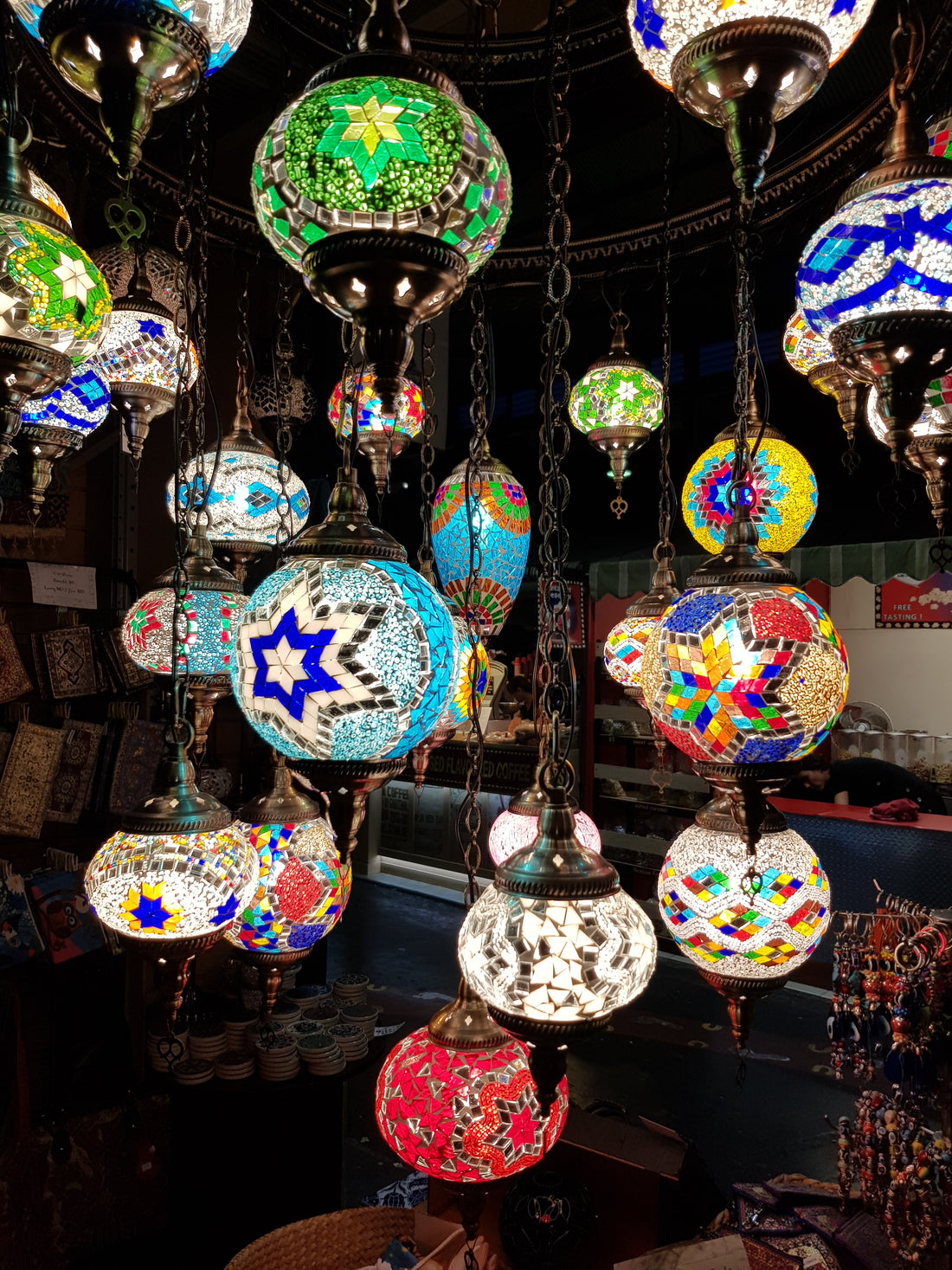History of Turkish Mosaic Lamps
Turkish Mosaic Lamps have become synonymous with the Grand Bazaar in Istanbul, and in turn are steeped in national pride and undoubtedly historical significance.
Crowds of tourists gasp in awe as an un seemingly impossible amount are hung precariously from the ceilings of the bazaar in waterfalls of colour.
Who created the first mosaic lamp is lost to history. They are as much of the identity of Istanbul as its landmarks themselves. But the tradition of making mosaics can be traced back through time to the Romans, and further back to the oldest discovered mosaics in Catalhoyuk in Konya Turkey which have been dated at 3500 years old; created in the Neolithic era.
These rough floor mosaics made from different coloured rocks evolved over time and through cultures that have sprung from the fertile land of the region.
Christian and Islamic influences within Turkey have shaped the country's history of these amazing lamps – relics and icons made from intricate cut glass – marble – stone and ceramic are found in archaeological sites throughout modern-day Turkey.
The symbology of the geometrical shapes that adorn Mosaic Lamps have their roots in the scientific discoveries and studies of the Islamic astronomers and mathematicians in the 8th century.
Geometric patterns are used in many Islamic arts, architecture, carpet weaving, ceramics, woodwork, and book covers for the Quran. Ancient Islamic beliefs that geometric patterns and arabesque designs represented the sense of infinity of God and did not signify an attempt to replicate what the divine has created, but instead symbolically honoured it.
This fascination with tessellation and its spiritual connections can be seen in the humble Turkish Mosaic Lamp of today.
A general fascination of Astrology in the medieval period can also be thought as a significant influence in the Mosaic Lamp. During the byzantine time it became common to decorate objects with personifications of the planets and the Zodiac constellations,
This reflected the belief that objects with astrological decoration had talismanic properties - that is, they were capable of influencing the occult power of the planets and stars, and thus protected the owner from sickness, bad luck, or defeat.
The Modern Turkish Mosaic Lamp was before electricity’s discovery powered by candle and hung in their hundreds from the grand mosques of Istanbul. It now has evolved to carry an electric bulb, from simple standard lamp bases to intricate hanging stands and chandeliers holding up to 49 + pieces of individually crafted class balls.
With this rich history it seems an honour to be able to craft and display these fantastic lamps in our homes. The processes of cutting individual pieces of glass and laying them out methodically have changed, technology making it an accessible and great introduction to mosaic art and craft.

